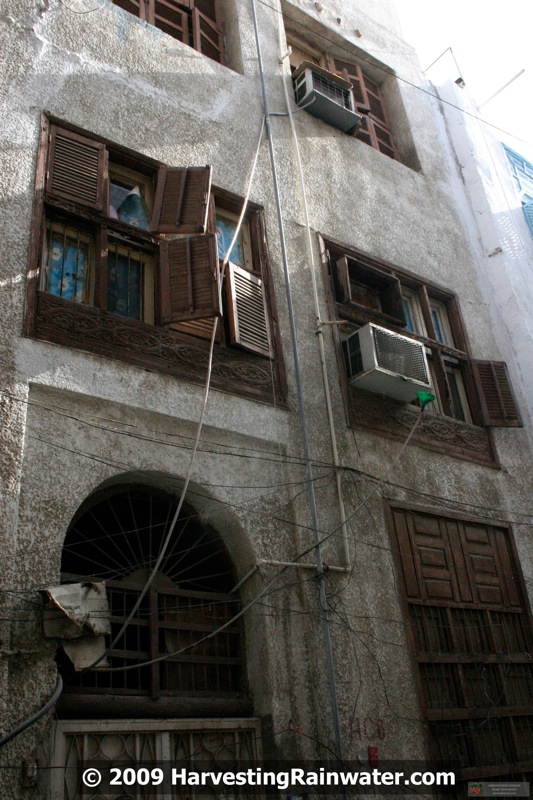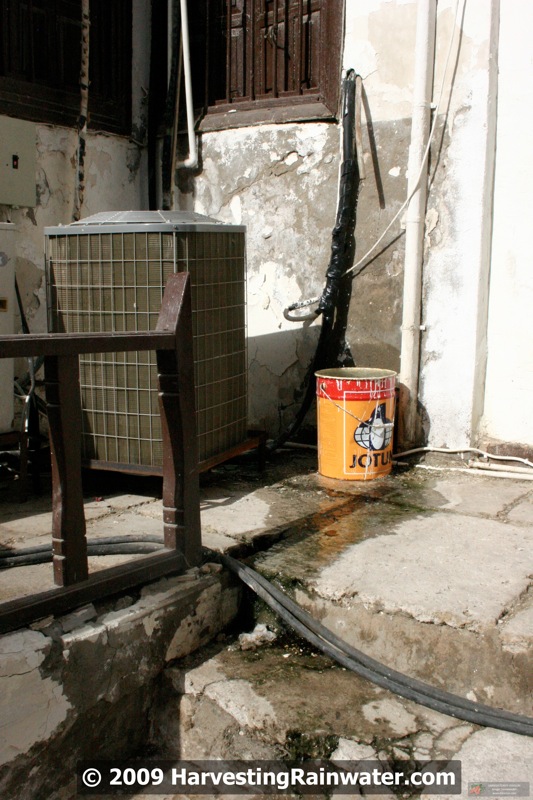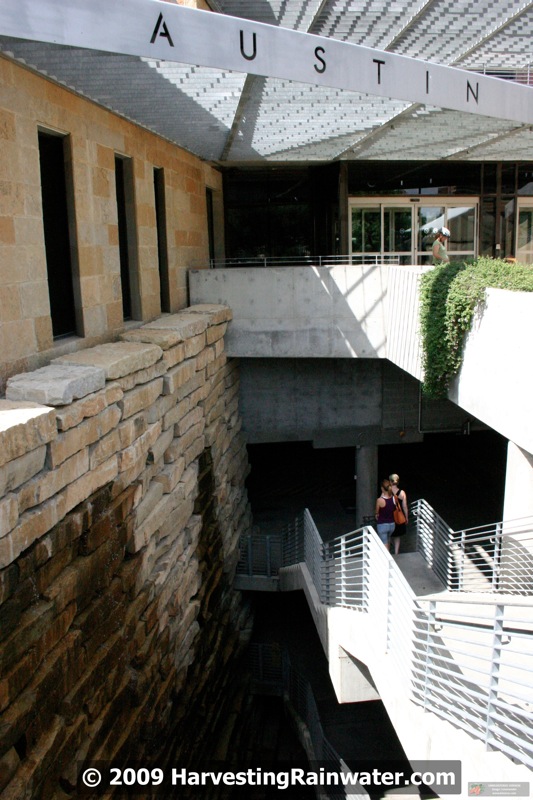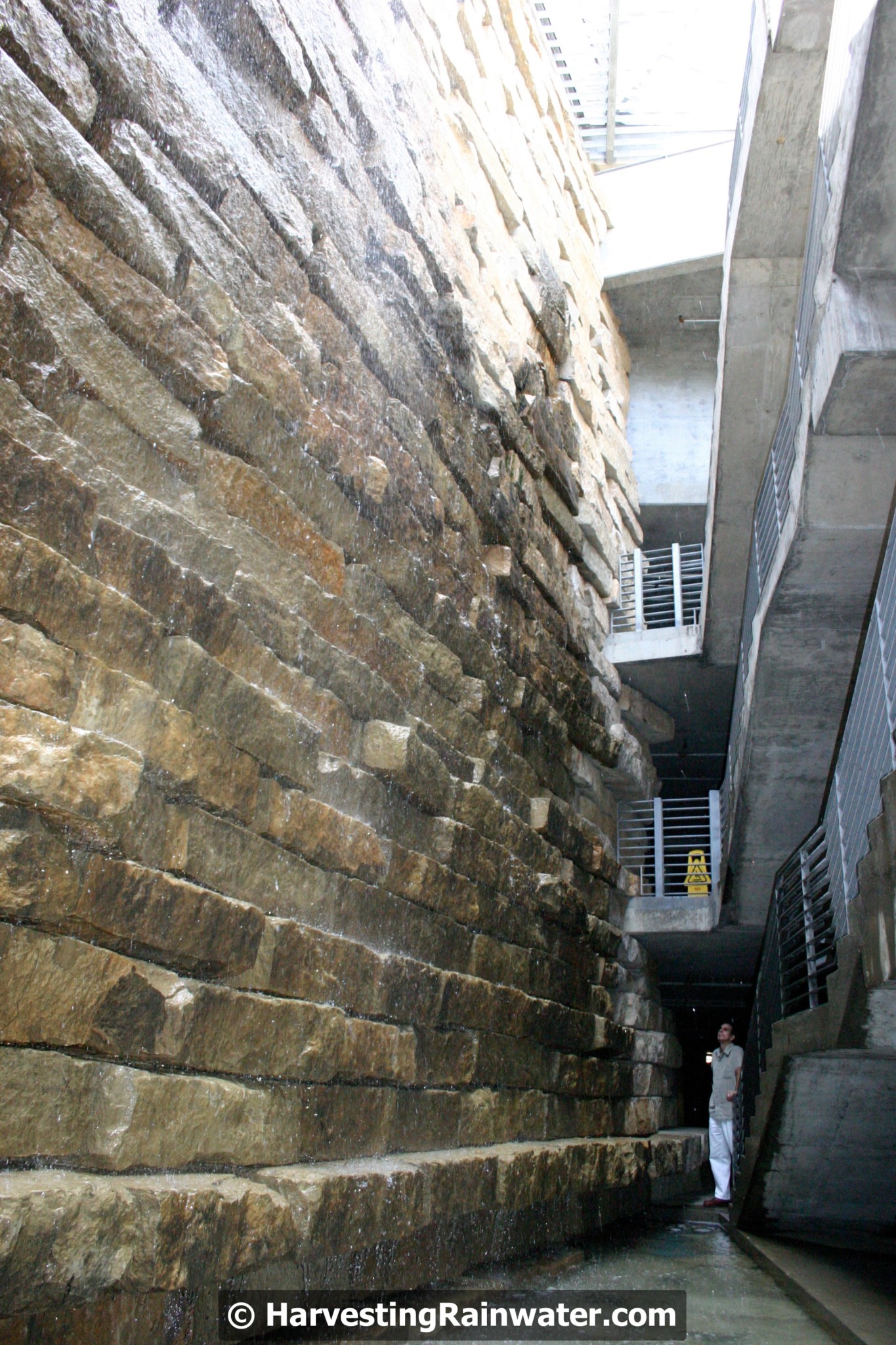Harvesting Air-Conditioning Condensate in Jeddah, Saudi Arabia, and Beyond
or If You—and Your Drink—Sweat, Then Harvest Condensate
By Brad Lancaster
www.HarvestingRainwater.com
I am finally getting to the sharing of my travel gleanings. This is the first of a series to follow – so keep checking back. This piece is from my U.S. State Department-sponsored trip to Jordan and Saudi Arabia in 2009. David Eisenberg of DCAT and I were sent as part of an Earth Day-themed cross-cultural exchange. David spoke about green building. I spoke about water harvesting. The trip was incredible, perhaps most of all due to the face-to-face interactions with Jordanians and Saudis – all of whom were incredibly welcoming, gracious hosts. This breed friendships and sharing, rather than the fear generated by the aggression of politicians and nations and misinformation in the media. My heartfelt thanks to all our Jordanian, Saudi, and State-Department hosts.
April 2009
Jeddah, Saudi Arabia, receives only about 2 inches (50 mm) of rain a year. Being that dry, it was odd that water was flowing down the streets and mosquitoes were fierce.
In this hot and humid coastal desert climate, air conditioners abound and their condensate steadily and wastefully drips into the street, pooling where mosquito populations then mushroom. But on occasion you see a wild matrix of funnels and hoses directing that condensate from coolers to courtyard plantings. Here where rainfall is low, but humidity intense, the potential for condensate and dew harvesting is very high.

Hoses directing air-conditioner condensate to courtyard plantings, Jeddah, Saudi Arabia 
Bucket and condensate creek, Jeddah, Saudi Arabia
How much condensate can you harvest?
IN A DRY CLIMATE/SEASON:
• A home air conditioner can generate 0.25 gallons (1 liter) of condensate/day
• A large commercial air conditioner can generate 500 gallons (1,900 liters)/day
IN A HUMID CLIMATE/SEASON:
• A home air conditioner can generate 18 gallons (68 liters) of condensate/day
• A large commercial air conditioner can generate 2,000 gallons (7,500 liters)/day
In the humid climate of Austin, Texas (USA), the condensate from the City Hall air conditioners provides all the water needed for a large waterfall at the City Hall entrance.

Top of the Austin City Hall air-conditioner-condensate waterfall 
Bottom of the Austin, Texas City Hall waterfall. The water is condensate harvested from the building’s air conditioners.
Where does your condensate go? If to the sewer drain, redirect it to water-harvesting earthworks and their associated plantings.
Condensate is distilled water. It does not contain salt. Thus it is a high-quality water source. Though there is the possibility of the condensate leaching lead from lead-based solder, if this is used in the cooler’s plumbing, or copper from copper pipes. Air-conditioner manufacturers take note: you can make a cooler without these toxic materials, and then market your appliance as both an air conditioner and a water machine.
Can you harvest condensate in your area? If you have condensate then the answer is yes.
The signs are clear when that harvest is potentially abundant – you sweat like mad and so does your cool drink (condensate beading profusely on your glass).

Volume 1

Volume 2
See Rainwater Harvesting for Drylands and Beyond, Volume 2: Water-Harvesting Earthworks for more on condensate harvesting, including a table helping you estimate your condensate volume.



